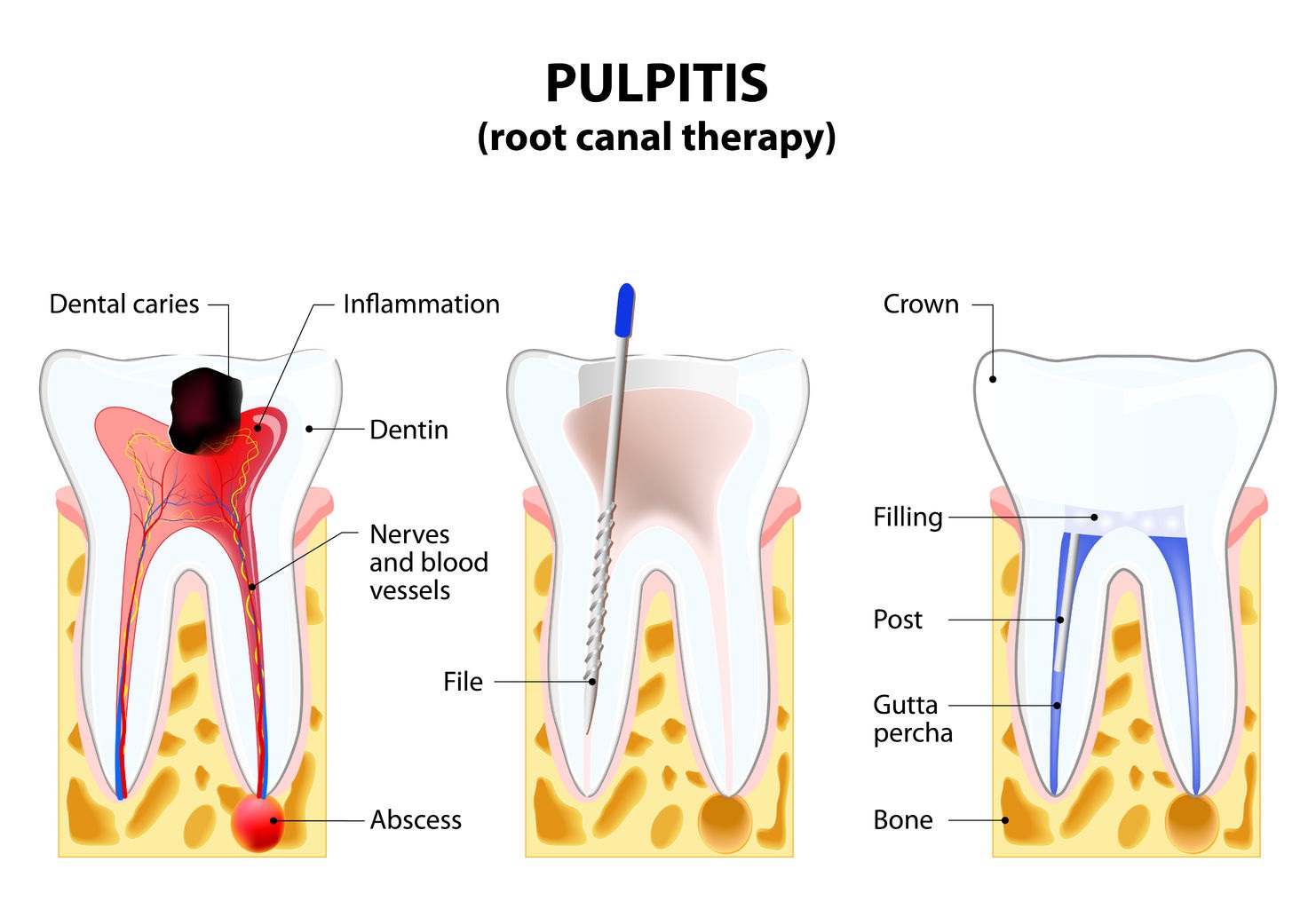Root Canal –
Nothing is as good as a natural tooth! And sometimes your natural tooth may need root canal (endodontic) treatment for it to remain a healthy part of your mouth.
Most patients report that having root canal (endodontic) treatment today is as unremarkable as having a cavity filled.
Endodontic treatment (Root Canal) is necessary when the pulp, the soft tissue inside the root canal, becomes inflamed or infected. The inflammation or infection can have a variety of causes: deep decay, repeated dental procedures on the tooth, or a crack or chip in the tooth. In addition, an injury to a tooth may cause pulp damage even if the tooth has no visible chips or cracks. If pulp inflammation or infection is left untreated, it can cause pain or lead to an abscess.
You can learn more about Root Canals by visiting: http://www.aae.org/patients/treatments-and-procedures/root-canals/root-canals.aspx

Root Canal Retreatment –
With proper care, most teeth that have had root canal (endodontic) treatment can last as long as other natural teeth. In some cases, however, a tooth that has received endodontic treatment fails to heal. Occasionally, the tooth becomes painful or diseased months or even years after successful treatment. If your tooth has not healed or has developed new problems, you have a second chance. Another procedure, endodontic re-treatment, may be able to save your tooth.
As occasionally happens with any dental or medical procedure, a tooth may not heal as expected after initial treatment for a variety of reasons:
- Narrow or curved canals were not treated during the initial procedure.
- Complicated canal anatomy went undetected in the first procedure.
- The placement of the crown or other restoration was delayed following the endodontic treatment.
- The restoration did not prevent salivary contamination to the inside of the tooth.
In other cases, a new problem can jeopardize a tooth that was successfully treated. For example:
- New decay can expose the root canal filling material to bacteria, causing a new infection in the tooth.
- A loose, cracked or broken crown or filling can expose the tooth to new infection.
- A tooth sustains a fracture.
Whenever possible, it is best to save your natural tooth. Retreated teeth can function well for years, even for a lifetime.
You can learn more about Root Canal Retreatments by visiting: http://www.aae.org/patients/treatments-and-procedures/endodontic-retreatment.aspx

Endodontic Surgery –
In a few cases, however, root canal (nonsurgical endodontic) treatment alone cannot save the tooth. In such a case, your dentist or endodontist may recommend surgery. Although there are many surgical procedures that can be performed to save a tooth, the most common is called apicoectomy or root-end resection. When inflammation or infection persists in the bony area around the end of your tooth after a root canal procedure, your endodontist may have to perform an apicoectomy.
You can learn more about Endodontic Surgery by visiting: http://www.aae.org/patients/treatments-and-procedures/endodontic-surgery.aspx

Dental Implants –
Dental implants are the most solid and longest lasting treatment option for individuals who are missing one, many or all of their teeth.
Regardless of the number of missing teeth, the minimum requirement for the placement of a dental implant is the availability of sufficient bone height and bone thickness in an anatomically appropriate location.
Dental implants are titanium screws that are gently inserted into the jaw bone, where they serve as permanent, solid anchors for new teeth. These teeth provide patients with the comfort, function and esthetics similar to their own original teeth.
“Research has proven that endodontic treatment and dental implants are equally successful. Therefore, it makes sense to start by trying to save your natural tooth—nothing looks, feels or functions like it. Ultimately, your treatment decision should be based on a plan you have discussed with your dental team and that you agree is best for your overall health.”
You can learn more about dental implants by visiting: http://www.aae.org/patients/treatments-and-procedures/implants/dental-implants.aspx

